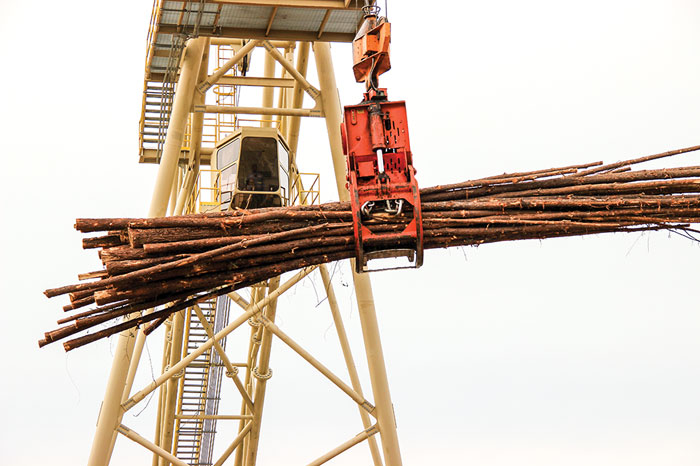Remember those heady days a decade ago, when Green Circle and Dixie Pellets were the first two mills to start up in 2008? And soon after a stream of similar projects were announced, kicked around and in some cases greenlighted, leading to today’s industry that features almost 20 export pellet mills scattered from Virginia to Texas in close proximity to Gulf and Mid Atlantic ports. The industry’s annual production is approaching 5 million tons with a collective annual capacity of 6 million tons.
As with any major natural resource-based industrial expansion, there’s bound to be critical assessments from environmental groups, and the pellet industry has seen its share of ginned-up controversy from groups such as the Dogwood Alliance, which has made the most noise over pellet industry harvesting practices.
“For as long as I’ve been in the business, we have had these groups that hate the idea of industrial forestry,” says Dean McCraw, consulting forester and owner of McCraw Energy, who’s worked in Southern fiber management for decades. “I never understood their campaign of lies and hatred for the industry, as the alternative to forestry is what?”
Research released in 2017 and supported by the U.S. Dept. of Energy’s Oak Ridge National Laboratory Center for BioEnergy Sustainability and other groups has shown the pellet industry, after a decade of operation and growth, is quite sustainable.
One paper, “Status and prospects for renewable energy using wood pellets from the southeastern United States,” covered a mountain of scientific studies and literature related to the question.
Findings show that pellet production accounted for only 2% of total tree harvest removals in 2014. Additional data shows pellet exports account for less than 1% of U.S. forest products by weight and less than .5% of total export value.

A decade after the first export pellet plant started up, recent research shows the industry operates sustainably.
The research also shows that the biggest threat to Southern U.S. timber inventories isn’t logging, it’s land conversion to other uses. While logging can produce short-term loss of carbon stock and habitat alteration, responsible management is always preferable to non-forest conversion. .
Pellet production also provides a key market input by creating demand for lower value timber, which in turn gives landowners more incentive to manage for timber.
With the Forest Service projecting up to a 10% decline in forest area in the Southeastern U.S. by 2060 due to population growth, urban development and conversion to agricultural use, it’s important for landowners to have motivation to retain forested land, researchers say.
Researchers note that in response to future forest product market conditions landowners could go to shorter rotations, higher density planting or more frequent thinning that could affect carbon stock levels, but to date there’s no evidence of any change in stocking density trends according to Forest Service data for counties in areas of high pellet production.
Researchers also report that prices for bioenergy feedstocks are unlikely to increase enough to drive major shifts in forest management because low-cost biomass is plentiful across the globe.
One indirect benefit of pellet demand is closer review of current practices by all stakeholders involved in the industry, and an ongoing monitoring of the effects of pellet industry harvests to ensure confidence in forest and habitat management systems.
In its final conclusion on the prospects of using Southeastern wood pellets for renewable energy, researchers stated “The balance of evidence... suggests that current levels of wood pellet production in the SE USA have had a benign effect on forest ecosystem services.”
Another research study supported by the same groups looked at Forest Service Forest Inventory and Analysis annual survey data for two timber regions supplying pellet wood to mills feeding the ports of Chesapeake, Va. and Savannah, Ga., from 2002-2014.
Both recorded timber inventory increases during that time, including more timber and plantation volume on the Chesapeake area, and larger carbon pools and more areas with large timber in the Savannah area. According to the study, “These results show that benefits accrue when sustainable forest management provides wood pellets for energy that keep fossil fuel in the ground.”
According to Seth Ginther, Executive Director of the U.S. Industrial Pellet Assn. (USIPA), “The industrial pellet industry has tapped into an underutilized natural resource in the U.S. South and developed a sustainable, innovative supply chain that can take this raw material and deliver it to the world in the form of densified renewable fuel that provides a low-carbon, baseload substitute for coal.”